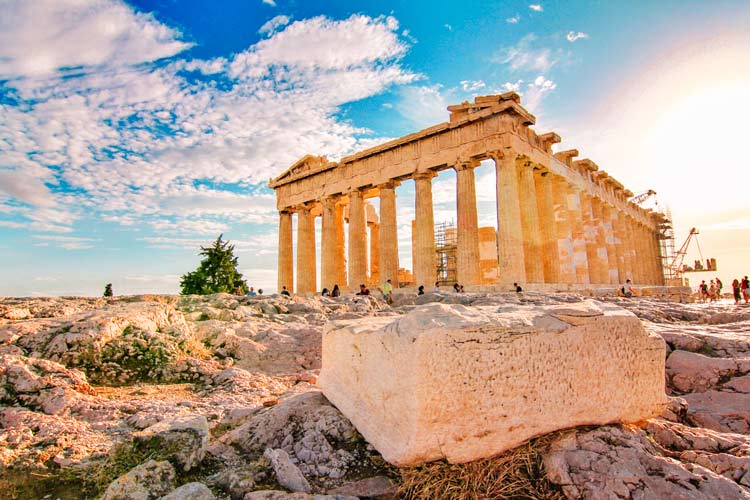As a new year approaches on the horizon, travel enthusiasts are finalising their 2025 bucket lists. There are countless things to see and experience when travelling across the globe, and one of the most enriching experiences you can have will come from visiting some of the oldest countries in the world.
We are going to be delving into five of the oldest countries on Earth that have withstood the test of time, boasting rich histories, cultural treasures, and architectural marvels. From ancient pyramids to mediaeval castles, these destinations offer glimpses into the lives of our ancestors and the legacy they’ve left behind. Here are five remarkable countries that you may want to add to your bucket list for 2025.

1. Egypt (6,000 BCE): The Timeless Land of the Pharaohs
In the northeastern region of Africa, you will find Egypt, an ancient country renowned for its amazing pyramids. Egypt is one of the oldest nations in the world, dating back to 6,000 BCE. Along with its pyramids, Egypt’s fascinating history of enigmatic hieroglyphics and advanced mummification techniques continues to intrigue modern scholars.
This destination is best visited between October and April when the temperature is cool, providing the best opportunity to explore the country’s vast deserts and ancient landmarks.
Historical Highlights:
- Pyramids of Giza: These iconic structures, built over 4,500 years ago, serve as eternal tombs for pharaohs like Khufu and Khafre. Nearby, the enigmatic Sphinx guards the Giza Plateau.
- Valley of the Kings: Near Luxor, this necropolis houses the ornate tombs of pharaohs, including the legendary Tutankhamun.
- Temple of Karnak: One of the world’s largest religious sites, this complex in Luxor showcases incredible ancient Egyptian architecture.

2. India (3,000 BCE): A Tapestry of Cultures
India is one of the world’s oldest countries with timeless traditions that will leave you in awe. India’s history dates back to 3,000 BCE. The country has a profound spiritual heritage that attracts visitors from near or far. The country’s historical journey includes the Indus Valley Civilisation, the construction of breathtaking architectural landmarks, and the emergence of Hinduism, which is the main religion there.
The best time to explore India and avoid its scorching heat is between December and March. Visiting the country during these cool months will also help you to avoid monsoon rains.
Historical Highlights:
- Taj Mahal: Built in the 17th century as a testament to love, this white marble mausoleum in Agra is an enduring symbol of India.
- Mahabodhi Temple: Located in Bodh Gaya, this UNESCO World Heritage Site marks the spot where Buddha attained enlightenment.
- Ajanta Caves: These rock-cut caves in Maharashtra showcase intricate Buddhist paintings and sculptures from the 2nd and 1st centuries BCE.

3. Greece (3,000 BCE): Cradle of Western Civilisation
Greece dates back to 3,000 BCE with an incredible history that continues to intrigue thousands of people. Greece is famously known as the birthplace of democracy and Western philosophy. From the city-states of Athens and Sparta to the mythological tales of gods and heroes, Greece has left an indelible mark on the world.
Visiting Greece will be a wonderful experience, especially if you go during spring (April–June) and autumn (September–October). These seasons bring pleasant weather for sightseeing and typically have fewer crowds.
Historical Highlights:
- Acropolis of Athens: A UNESCO World Heritage Site, this hilltop complex features the Parthenon and other ancient temples dedicated to Greek gods.
- Ancient Olympia: The site of the first Olympic Games in 776 BCE, this sanctuary celebrates athletic and religious traditions.
- Palace of Knossos: Located on the island of Crete, this Bronze Age palace offers insights into the Minoan civilisation.

4. France (841 BCE): A Mosaic of Mediaeval Majesty
France is renowned for its culinary finesse and artistic achievements. It is a country rich in history that dates back to 841 BCE. From prehistoric cave paintings to mediaeval fortresses, France offers a diverse array of historical treasures.
The beauty of France is best explored in the spring and autumn. These seasons feature mild weather and fewer crowds to navigate, which makes exploring the historical landmarks more relaxing.
Historical Highlights:
- Cave of Lascaux: This prehistoric site in Dordogne features paintings that date back 17,000 years, providing a window into early human life.
- Mont Saint-Michel: Perched on a rocky island in Normandy, this mediaeval abbey is a UNESCO World Heritage Site and an architectural marvel.
- Château de Carcassonne: One of Europe’s most well-preserved mediaeval fortresses, this castle in southern France showcases impressive turrets and double walls.
